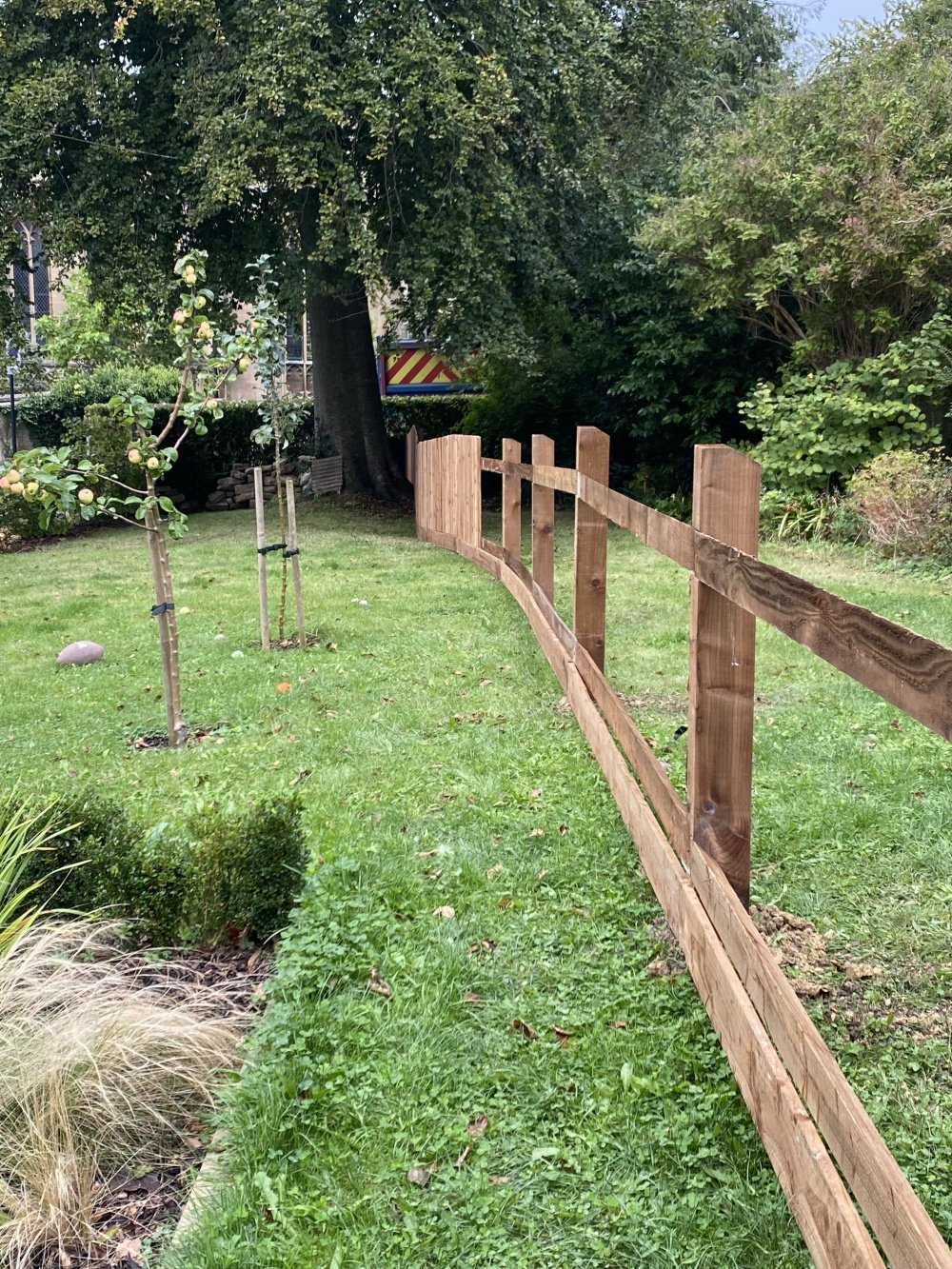This Forum will close on Wednesday 27 March, 2024. Please refer to the announcement on the Discussions page for further detail.
Hedgerow Raised Mound Planting
Does anyone have experience of raised mound planting please? We want to plant along this new fence line. Up to the end of the bed there will be yew and then we're changing into Portuguese Laurel. I thought we'd have to stop at the point where the fence slats currently end, poor drainage in clay soil, beech tree roots dominate the area etc but then someone mentioned raised mound planting to me. It looks tricky from what I've seen on line?
We plan on lifting the turf and potentially using an excavator on the nearest section this weekend to prepare it. The rest of the hedgerows are beech but we need something evergreen and a bit quicker to cover this time around.
Many thanks

We plan on lifting the turf and potentially using an excavator on the nearest section this weekend to prepare it. The rest of the hedgerows are beech but we need something evergreen and a bit quicker to cover this time around.
Many thanks

0
Posts
However, the important thing is to create a proper, clear border for the hedging first, with plenty of organic matter in it. If you can do that soon, you can get bare root hedging bought and planted by November or so, and that will establish over winter.
I'm not sure which direction you're meaning when you say 'up to the end of the bed' but if you're using an excavator to dig a bed, the ground will get very compacted, which will just compound any drainage problem, so that isn't ideal. If you do that, it may be better to wait until spring to plant, to give the added material time to break down and do a decent enough job for the whips to establish and thrive. If you can't maintain bare root whips over winter somewhere [heeling in etc] you may need to buy potted plants later instead.
If so, you would still need the organic matter added to help the soil structure, and you'd need to ensure the soil was well enough broken up before planting so that the roots can get down well and spread. You would also need to be more vigilant with watering, if you're in a drier area, if planting in spring, but the organic matter will help with moisture retention in drier spells, and you can also keep mulching, after thorough watering, which will be helpful to the new planting .
I live in west central Scotland - not where that photo is...
The better, and more moisture retentive you can make the soil in that area, the better. It's also better to plant smaller whips and have them quite densely planted as well. That means they're more likely to establish, and less problematic if you lose some - which is very likely. Mulching with organic matter as often as you can will also help with the drier conditions through summer, but that's when you'll have to be vigilant with watering, and you'll need to do that until this time next year. For new hedging to thrive, rain has to be heavy, and frequent, enough in summer to get through a tree canopy, so if that isn't happening, you'll need to use buckets of water every few days to make up for that. If the whips dry out for any length of time, that's where it's problematic.
There are lots of properties here with P. laurel hedging, put in for new houses in particular, and in fairly inhospitable sites, but we have the reliable rainfall, so they get established easily. After that, they can cope with the site regardless of how good or bad it is.
Hope it goes well for you.
I live in west central Scotland - not where that photo is...